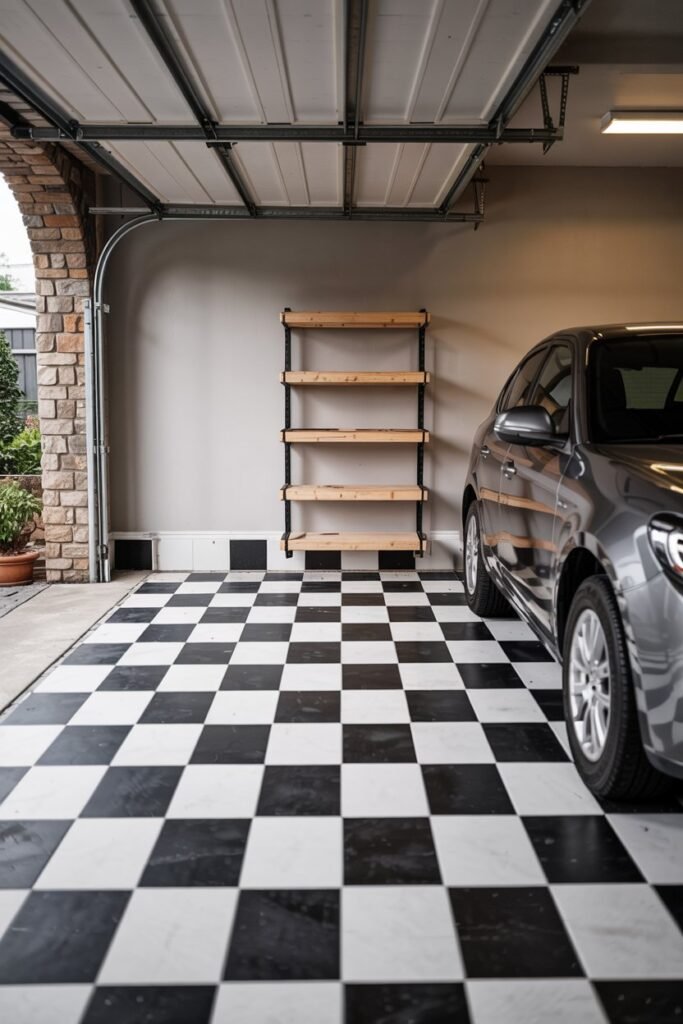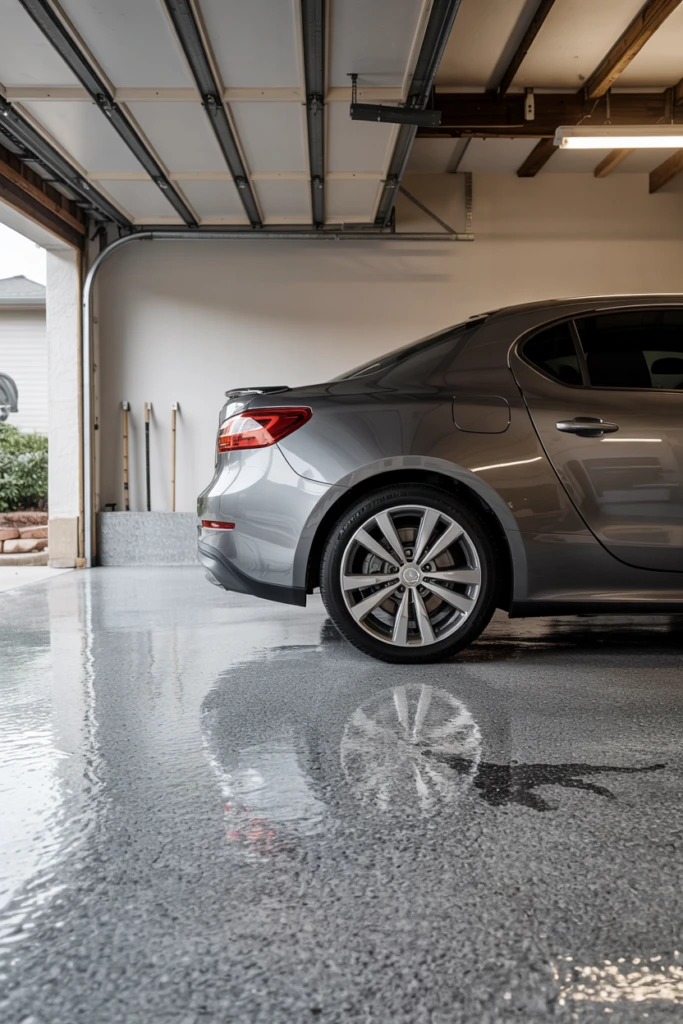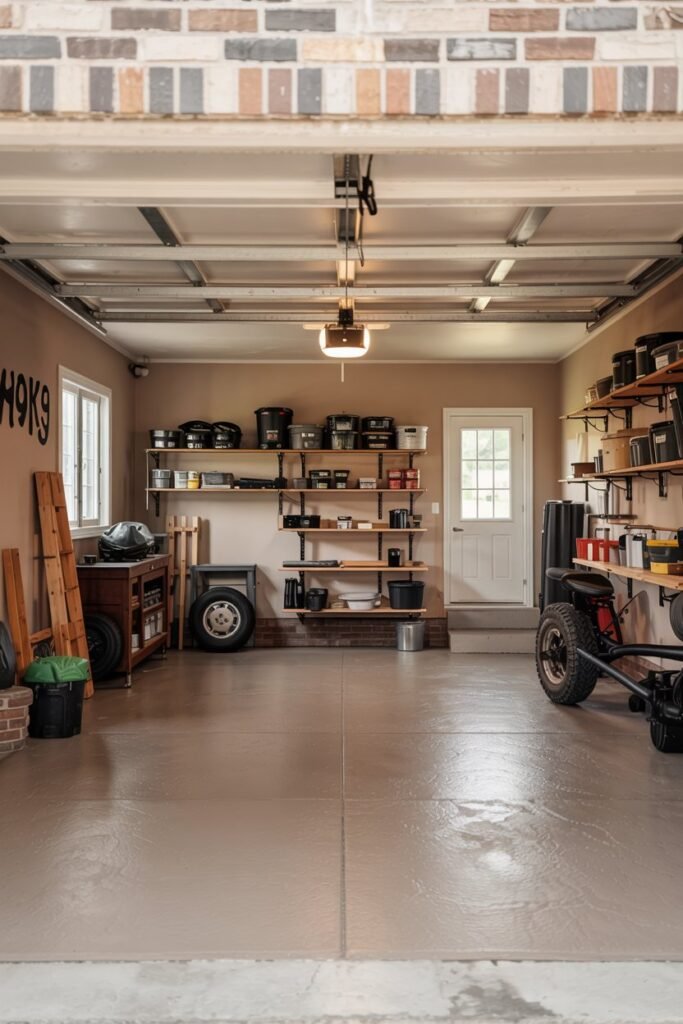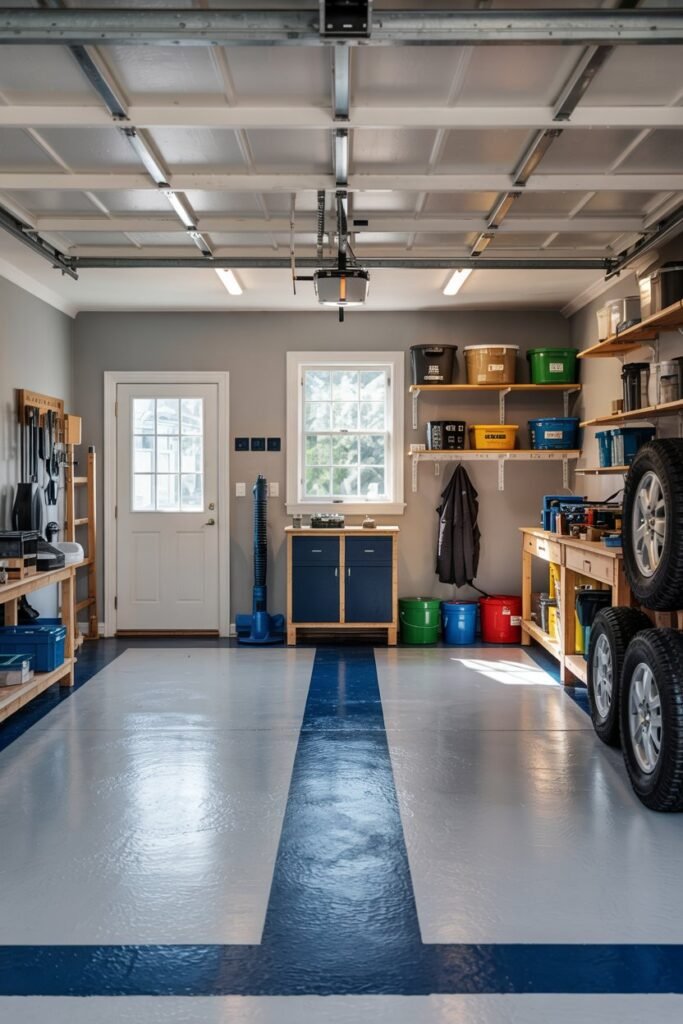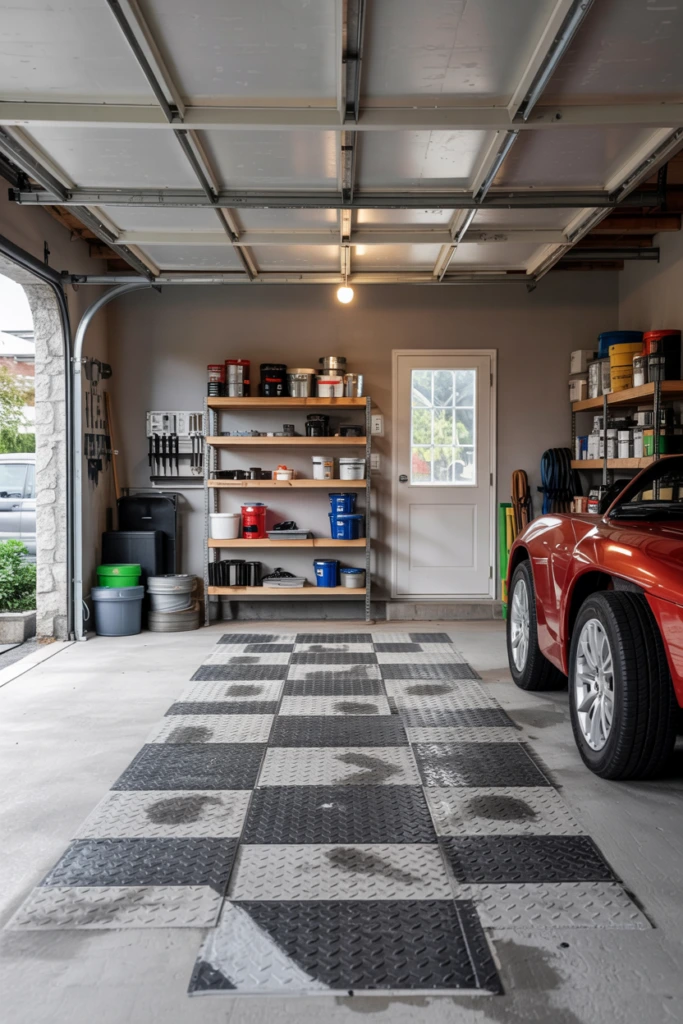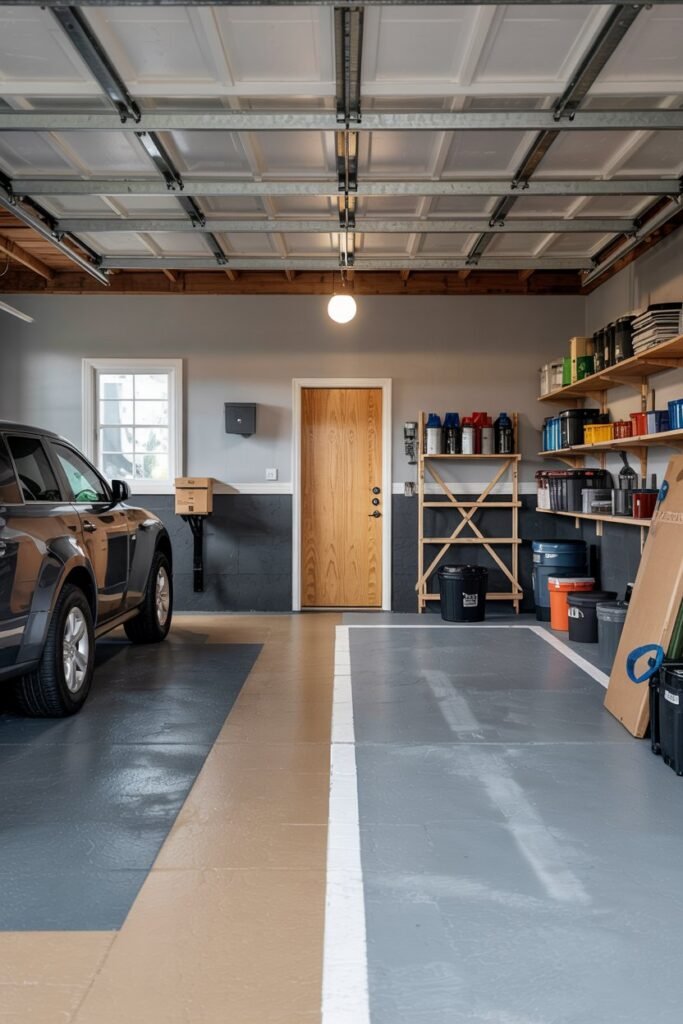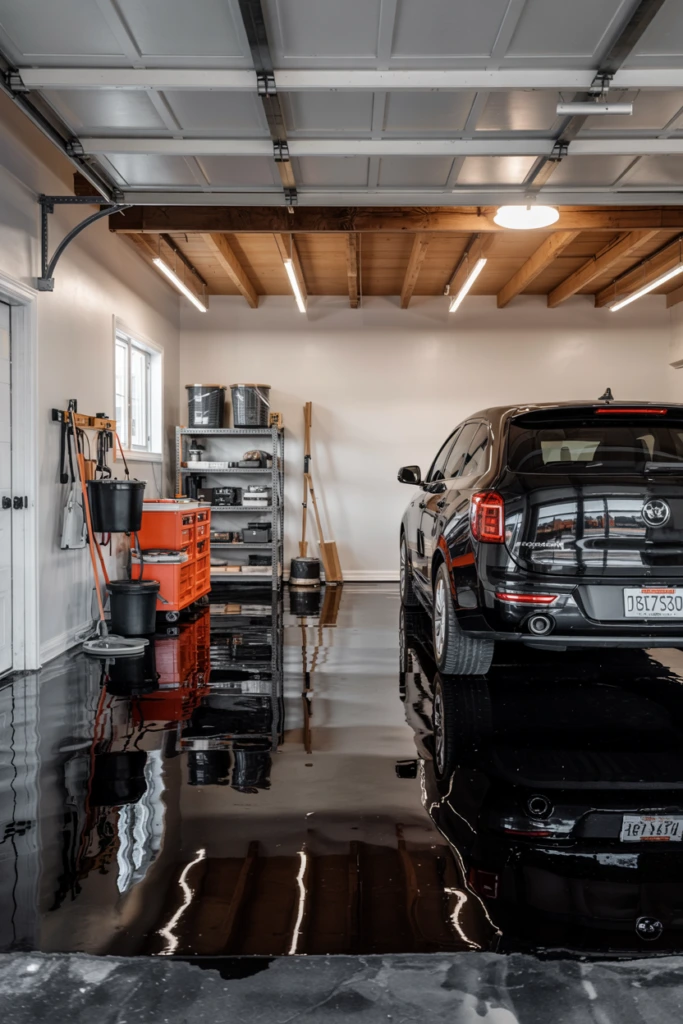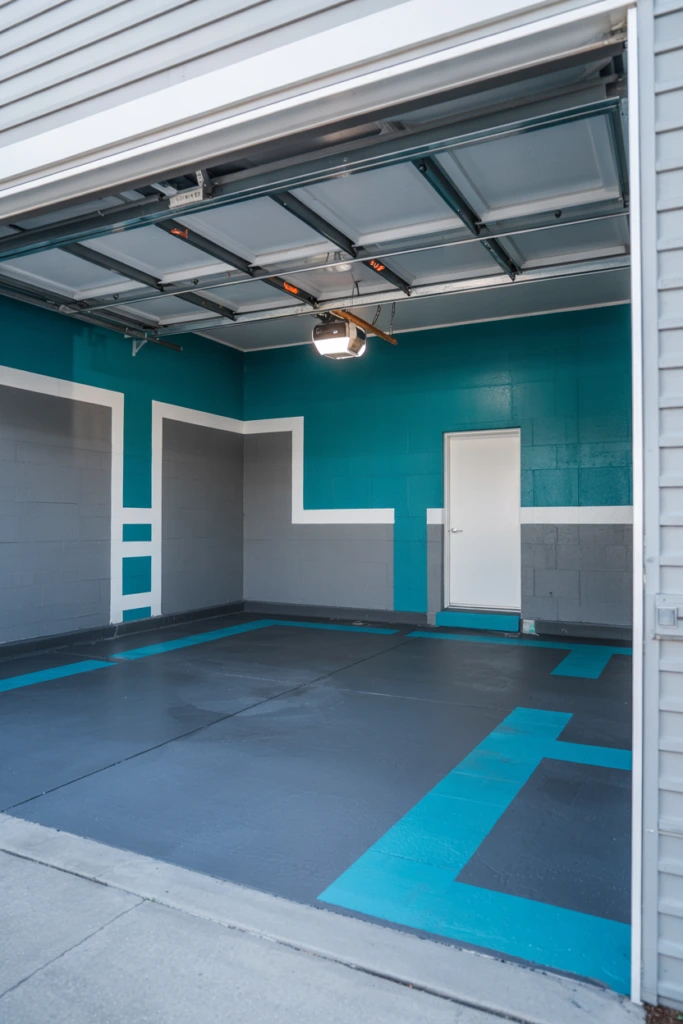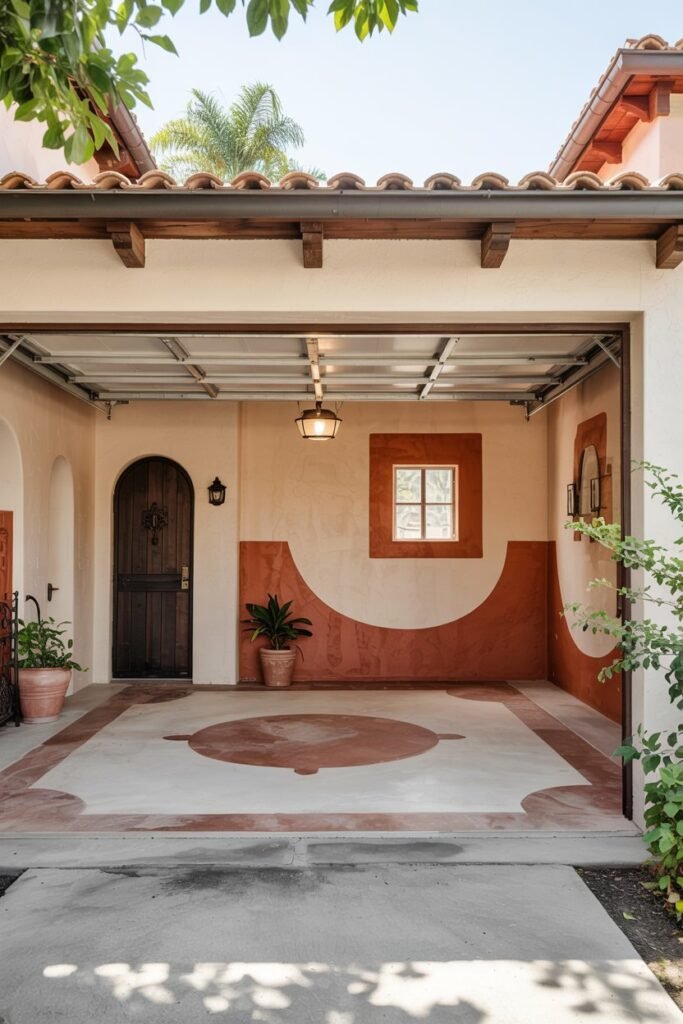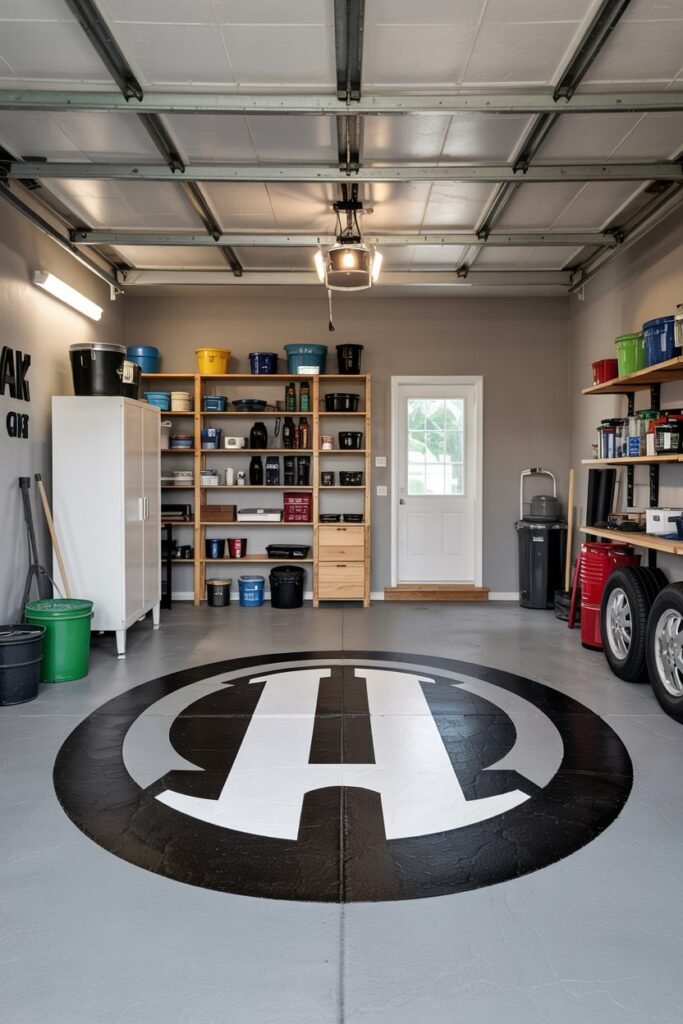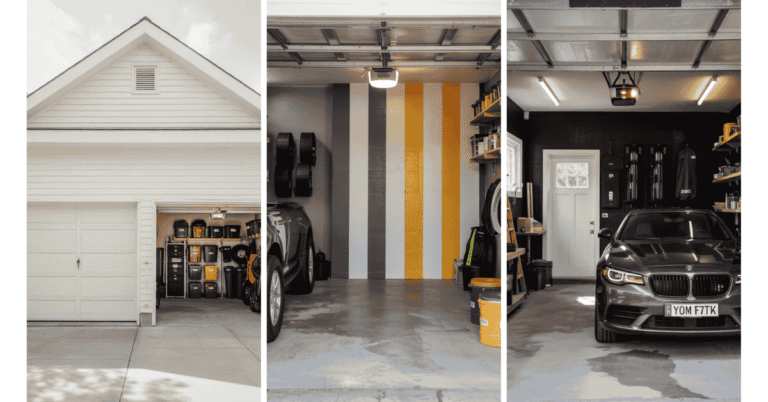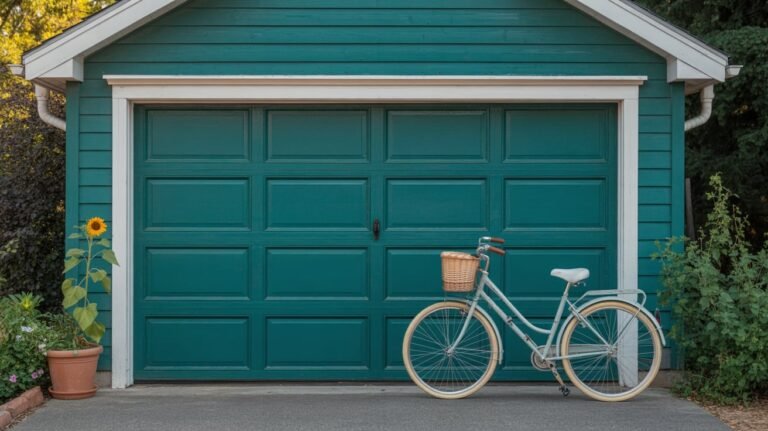15 Garage Floor Paint Ideas to Transform Your Space

Your garage floor takes a beating. Oil stains, tire marks, dropped tools—it all adds up. But here’s the thing: a fresh coat of paint can completely change how your garage looks and functions.
I’ve spent years helping homeowners upgrade their garages, and I’ve seen firsthand how the right floor paint makes a difference. In this guide, I’ll walk you through 15 creative garage floor paint ideas that blend style with durability.
Whether you want a sleek modern look or something bold and unique, you’ll find practical options that actually hold up to daily use.
1. Classic Solid Gray
I always recommend solid gray as a starting point for anyone new to garage floor painting. It’s timeless, hides dirt well, and complements virtually any garage setup.
Gray epoxy or latex concrete paint creates a clean, professional appearance without overwhelming the space. I’ve used this approach in dozens of garages, and homeowners appreciate how it makes the entire area feel more organized. Plus, it’s incredibly forgiving when it comes to minor imperfections in the concrete.
The best part? Solid gray works with any storage system or wall color you add later.
2. Bright White for Maximum Light
If your garage lacks natural light, white floor paint can work wonders. I’ve transformed dark, dingy garages into bright workspaces simply by painting the floor white.
White epoxy reflects overhead lighting, making your garage feel larger and more inviting. This works especially well if you use your garage as a workshop or hobby space where visibility matters. Keep in mind that white shows dirt more easily, so you’ll need to sweep regularly.
I suggest using a high-quality epoxy coating with a slight sheen for easier cleaning.
3. Bold Red Racing Stripe
Want to add personality without going overboard? I love incorporating a red racing stripe down the center of the garage floor.
This design pays homage to classic car culture while keeping the overall look clean. I typically paint the base floor in gray or black, then add a 12-18 inch red stripe running from the garage door to the back wall. The contrast creates visual interest and can even help you align your vehicle when parking.
It’s a simple way to make your garage feel custom without a massive time investment.
4. Checkerboard Pattern
The checkerboard pattern never goes out of style. I’ve installed this classic design in both residential garages and commercial spaces, and it always delivers that professional, showroom quality.
I usually work with black and white squares, though gray and white also looks fantastic. The pattern takes more planning and tape work than solid colors, but the result is worth the effort. Each square typically measures 12×12 inches or 18×18 inches, depending on your garage size.
This design also has a practical benefit—the contrasting colors help highlight any spills or debris that need cleaning.
5. Metallic Silver Flake
Metallic finishes have exploded in popularity, and I understand why. Metallic silver flake coatings create depth and dimension that solid colors simply can’t match.
I apply these by broadcasting metallic flakes into wet epoxy, creating a speckled, reflective surface. The flakes catch light from different angles, giving your garage floor a dynamic, high-end appearance. This option works particularly well in modern homes or for car enthusiasts who want their garage to feel like a showroom.
The coating is also incredibly durable and hides minor floor imperfections beautifully.
6. Tan and Brown Earth Tones
Not every garage needs a bold statement. I often suggest tan and brown earth tones for homeowners who want something warm and understated.
These colors blend naturally with brick, wood, and stone elements you might have in or around your garage. I’ve found that earth tone epoxies create a welcoming environment if you use your garage for multiple purposes—storage, workshop, and occasional hangout space. The warmer palette makes the space feel less industrial.
Plus, these colors do an excellent job concealing dirt and wear over time.
7. Navy Blue Accent Sections
Navy blue adds sophistication without being too flashy. I like using navy as an accent color in specific sections rather than covering the entire floor.
For example, I might paint the main floor area in gray and add navy blue borders along the walls or in a designated workspace. This creates visual zones within your garage, which helps with organization. Navy also pairs beautifully with white or gray, giving you flexibility in your overall design.
It’s a color choice that feels both modern and timeless.
8. Speckled Granite Look
The granite look has become one of my go-to recommendations for clients who want something decorative but not overly busy. This finish uses colored flakes in multiple shades to mimic natural stone.
I broadcast the flakes into wet epoxy, creating a terrazzo-like appearance that adds texture and visual interest. The speckled pattern is excellent at hiding imperfections, stains, and wear patterns. I’ve installed granite-look floors in garages that double as home gyms, and the aesthetic holds up beautifully.
It’s durable, attractive, and surprisingly easy to maintain.
9. Diamond Plate Pattern
If you want an industrial aesthetic, the diamond plate pattern delivers. I’ve used stencils and specialty coatings to create this look, which mimics the textured metal plates you see in commercial settings.
This pattern works especially well in garages dedicated to automotive work or workshops. It gives the space a rugged, functional vibe while still looking intentional and well-designed. The texture isn’t physical—it’s visual—so you still get a smooth, easy-to-clean surface.
I recommend this option for homeowners who embrace a utilitarian style.
10. Two-Tone Color Block
Color blocking creates distinct zones in your garage without walls or dividers. I use this technique by painting different sections in complementary colors.
For instance, I might paint the main parking area in dark gray and the workshop area in lighter gray or tan. This visual separation helps organize your space and makes it feel more purposeful. The transition line between colors should be clean and straight, which requires careful taping but produces professional results.
It’s a practical design choice that also looks sharp.
11. High-Gloss Black
High-gloss black creates the most dramatic, luxurious look you can achieve with garage floor paint. I reserve this option for clients who want a true showroom feel.
The glossy finish reflects everything, making your vehicles and tools look even better. However, I always warn clients that black shows every speck of dust and dirt, so maintenance becomes more demanding. You’ll need to commit to regular cleaning if you choose this route.
When properly maintained, though, nothing beats the sleek sophistication of a black gloss floor.
12. Camouflage Pattern
For something truly unique, I’ve created custom camouflage patterns using multiple shades of green, tan, and brown. This works surprisingly well in garages attached to rustic or cabin-style homes.
I apply the pattern freehand with sponges and different paint colors, creating an organic, irregular design. It’s playful, unexpected, and incredibly effective at hiding dirt and stains. I’ve done this for clients who hunt, camp, or simply appreciate outdoor aesthetics.
It’s definitely not for everyone, but when it fits, it really fits.
13. Teal and Gray Combination
Teal has emerged as a trendy accent color, and I love pairing it with gray for a modern, fresh look. The cool tones work well together without feeling cold or sterile.
I typically use teal as an accent—perhaps in a border, in designated sections, or in geometric shapes within a gray base. This combination feels contemporary and energetic, perfect for homeowners who want their garage to reflect current design trends. The colors are also gender-neutral and broadly appealing.
I’ve received consistently positive feedback on this color pairing.
14. Terracotta and Cream Southwest Style
For homes with Spanish, Mediterranean, or Southwest architecture, terracotta and cream create a cohesive, warm aesthetic. I use these colors to extend the home’s style into the garage.
The earthy terracotta provides warmth, while cream keeps things light and open. I often incorporate these colors in patterns—perhaps terracotta borders with a cream center, or vice versa. This combination feels organic and intentional rather than generic.
It’s an excellent choice if you want your garage to feel like a natural extension of your home’s design language.
15. Custom Logo or Design
For the ultimate personalization, I’ve helped clients incorporate custom logos, sports team emblems, or unique designs into their garage floors. This requires stencils, multiple colors, and careful planning.
I’ve painted everything from college mascots to company logos to family crests. These custom elements turn your garage floor into a true statement piece. The process takes longer and costs more than standard paint jobs, but the result is completely one-of-a-kind.
If you have a passion worth displaying, your garage floor can become a canvas for expression.
Conclusion
Your garage floor doesn’t have to be an afterthought. With the right paint choice, you can create a space that’s both functional and visually appealing. I’ve walked you through 15 distinct ideas—from classic solids to bold patterns—each offering its own benefits.
Start by considering how you use your garage and what aesthetic matches your home’s overall style. Then choose a durable paint or epoxy system that can handle your specific needs. With proper preparation and application, your new garage floor will look great and last for years.
Ready to get started? Grab your supplies, clear out your garage, and transform that concrete slab into something you’ll actually be proud to show off.




